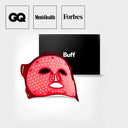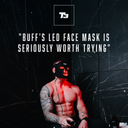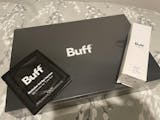LED Light Therapy Face Mask

LED Light Therapy Face Mask
- GQ
- MEN'S HEALTH
- forbes
- SKY SPORTS
- STYLIST
- T3
- Runner's World
- GQ
- MEN'S HEALTH
- forbes
- SKY SPORTS
- STYLIST
- T3
- Runner's World


"We noticed a difference in his skin after about two weeks."
"He’d wake up to see his skin looking more refreshed, less inflamed and with a natural glow – he’ll probably hate me for saying that. By week four, the small lines around his eyes had started to fade, which probably pleased him the most. His skin appeared fresher, and for someone who usually sticks to a simple 3-in-1 shampoo, conditioner and face wash, that’s a pretty good compliment."
The science behind the wavelengths
In a 2025 double-blind clinical trial in South Korea (Seoul St. Mary’s Hospital, Medicine journal), women aged 45–60 who used a 660 nm LED mask twice weekly for 4 weeks saw a significant reduction in eye and forehead wrinkles compared to a sham device, with over 70% reporting visible improvements.
Read more about the study.
A 2023 French clinical study (Skin Research & Technology (Couturaud et al., 2023) found that using a 630 nm LED face mask 12 minutes twice weekly for 3 months improved crow’s-feet depth, firmness, dermal density, skin roughness, and tone, with benefits lasting up to 4 weeks after stopping treatment.
Read more about the study.
In a 2023 randomised controlled trial published in Lasers in Medical Science, red (633 nm) and amber (590 nm) light led to a ~30% reduction in periocular wrinkle volume, outperforming control groups.
A randomised, split-face trial in South Korea (2007, Lasers in Surgery and Medicine) tested 633 nm and 830 nm LED light on 76 participants with facial wrinkles. After just 4 weeks, researchers reported up to 36% wrinkle reduction, a 19% increase in skin elasticity, and histology confirmed increased collagen and elastic fibres in treated skin.
A 2023 review (International Journal of Molecular Sciences, University of Modena, Italy) confirms that blue LED light (415 nm) effectively reduces acne lesions by inactivating Cutibacterium acnes, the bacteria linked to breakouts.























